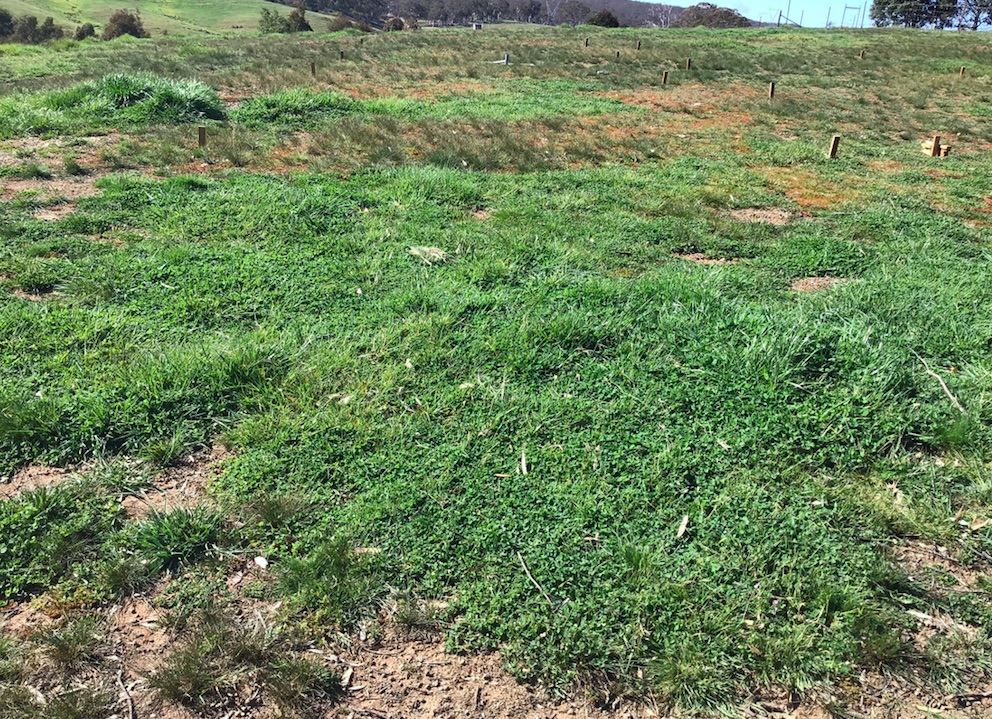The Farm 1 bare patch demonstration site in Bywong NSW is near the top of a north facing slope that is moderately steep and rocky. 22 years ago the area had a huge amount of Serrated Tussock and had a history of heavy grazing by sheep. After years of removal of the tussocks, in many places the most obvious ground cover was a sparse scattering of native Austrostipa scabra plants (Corkscrew Grass) with mostly bare ground between.
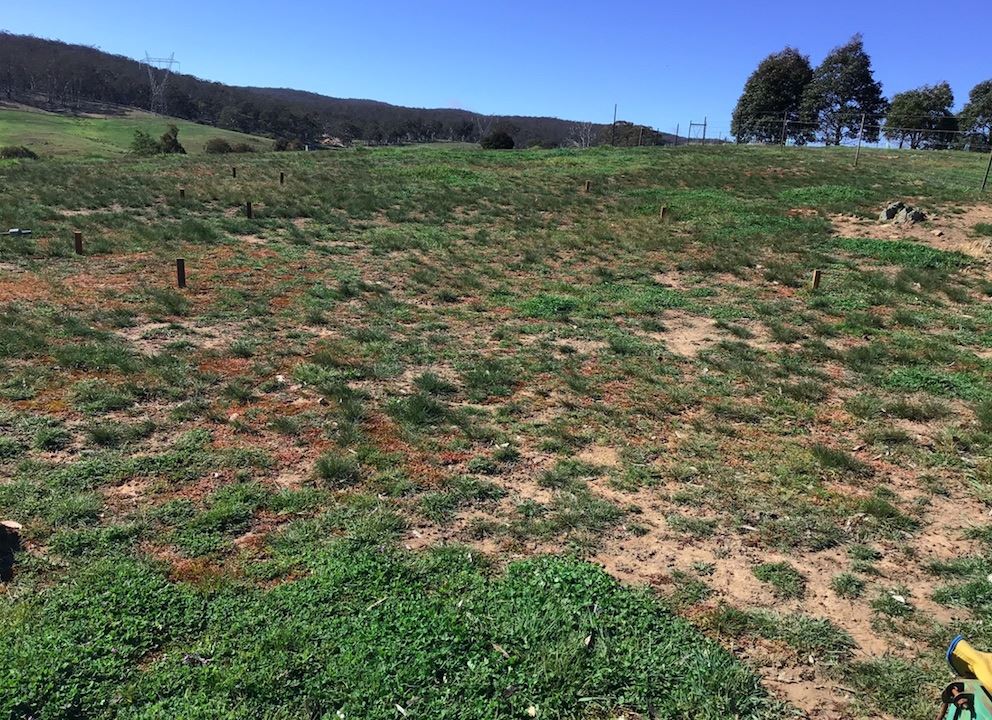
Many areas were completely bare during the last drought. Even though conservative grazing techniques have been used for 22 years including no grazing in the first 10 years and removal of stock during the droughts, this poor groundcover has shown little sign of improvement.
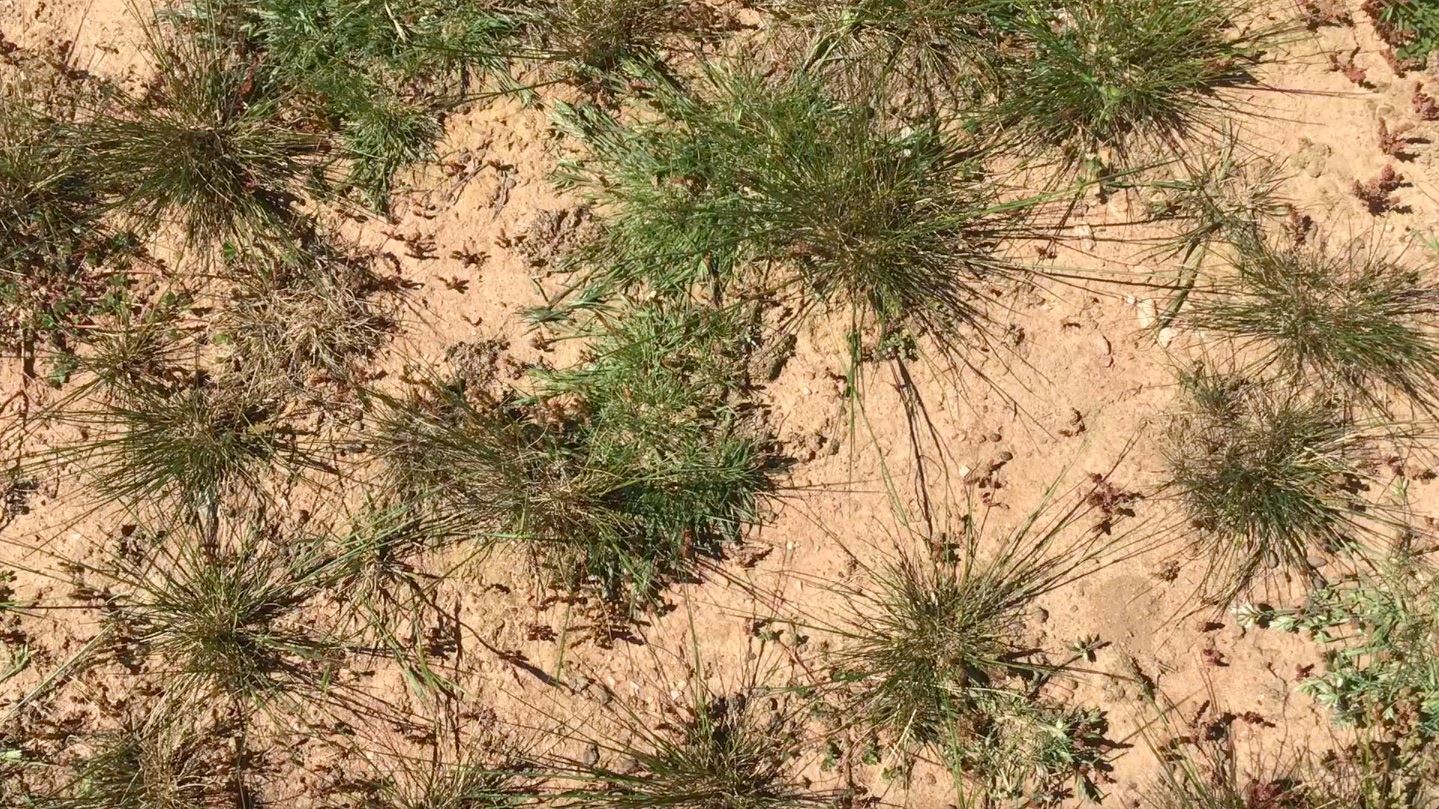
Our question was how to increase the amount of grassy groundcover on the site to reduce erosion and improve feed quality when the site has a light, acidic soil and is too steep to cultivate?
Soil samples were taken from the bare patch trial plots in 5cm increments down to 20cm in October 2020. These soil cores provide visual clues about the soil structure (the soil surface is at the bottom of the photo). There is a coarse gravel layer not far below the surface.
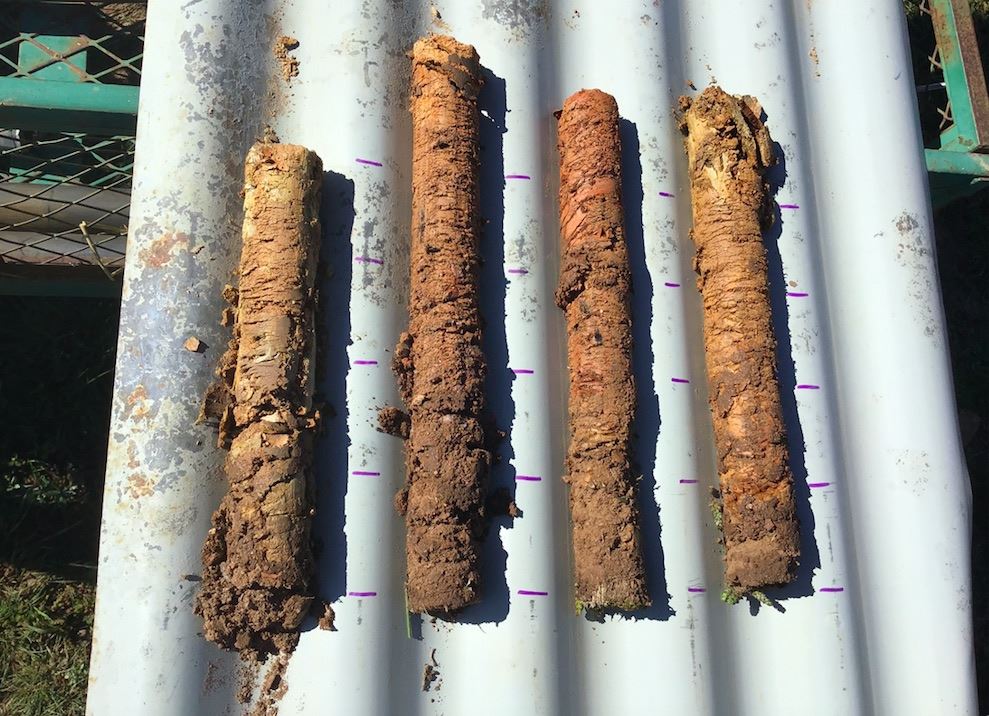
We also did slaking tests to observe what happens to the soil when it gets wet. There is a surprising amount of organic carbon in the top layer of the soil which helps to stabilise the soil. The soil 10cm down from the surface is much less stable.
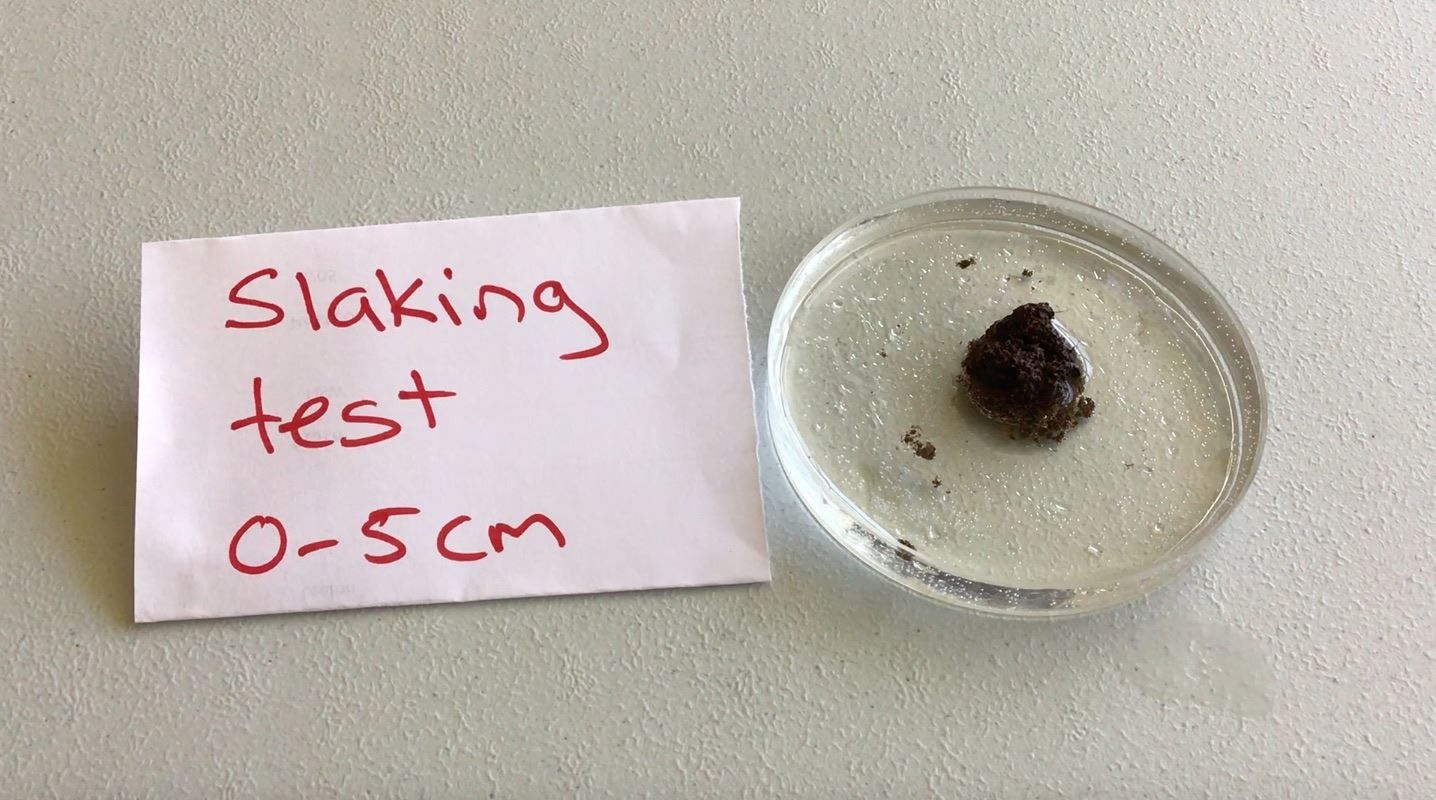
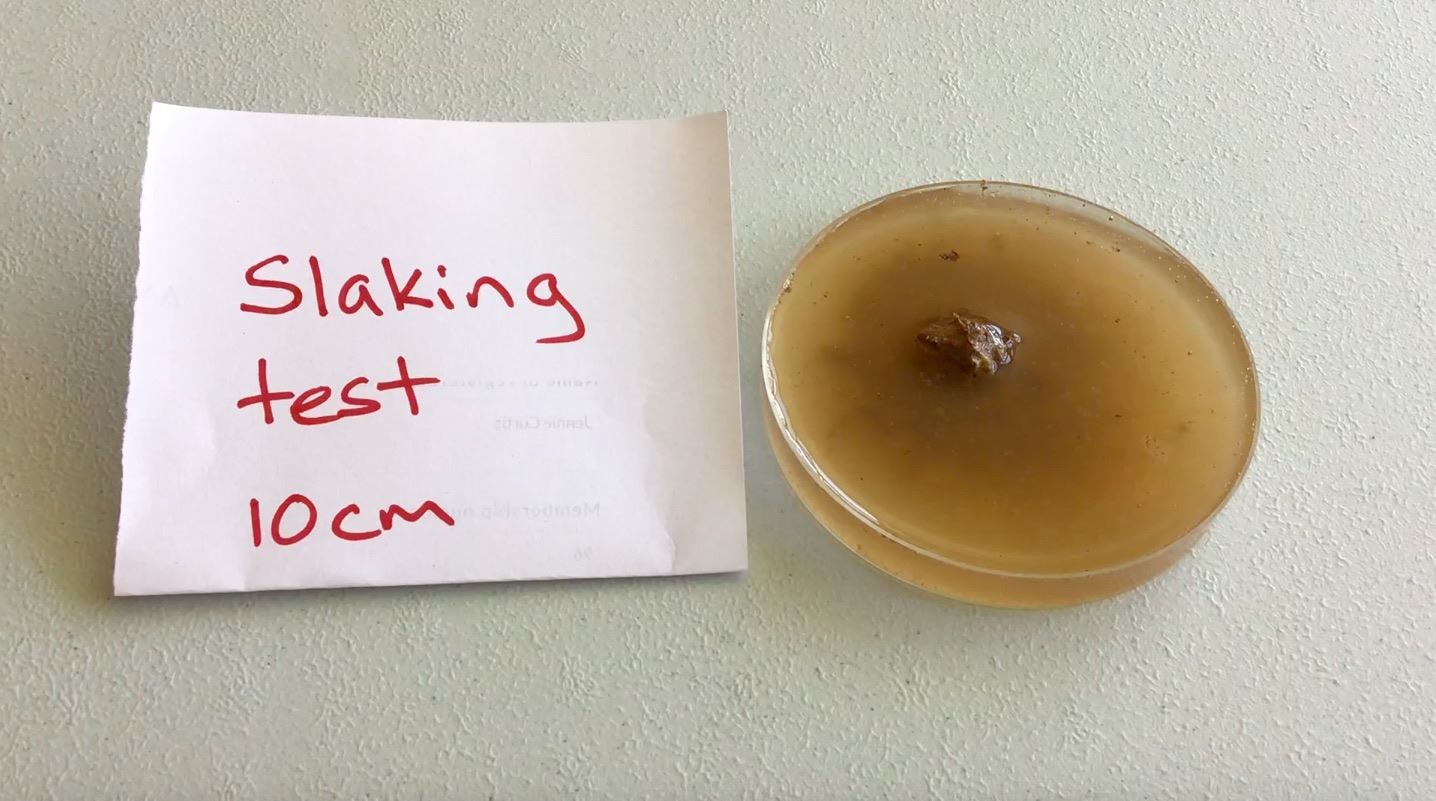
The soil test results showed that the pH in the top 5cm of soil in the bare patches was more acidic than lower in the profile.
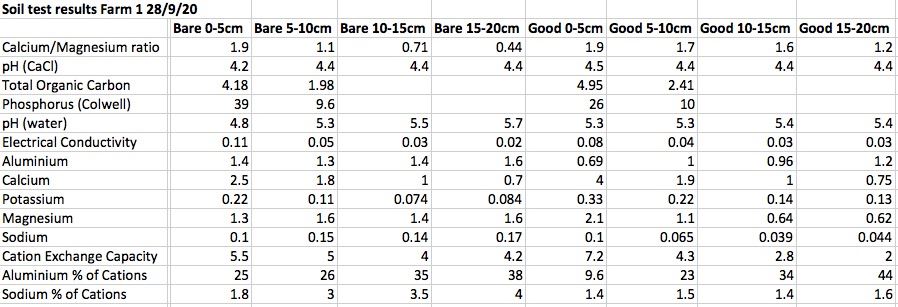
We compared the bare patch with a nearby good patch.
